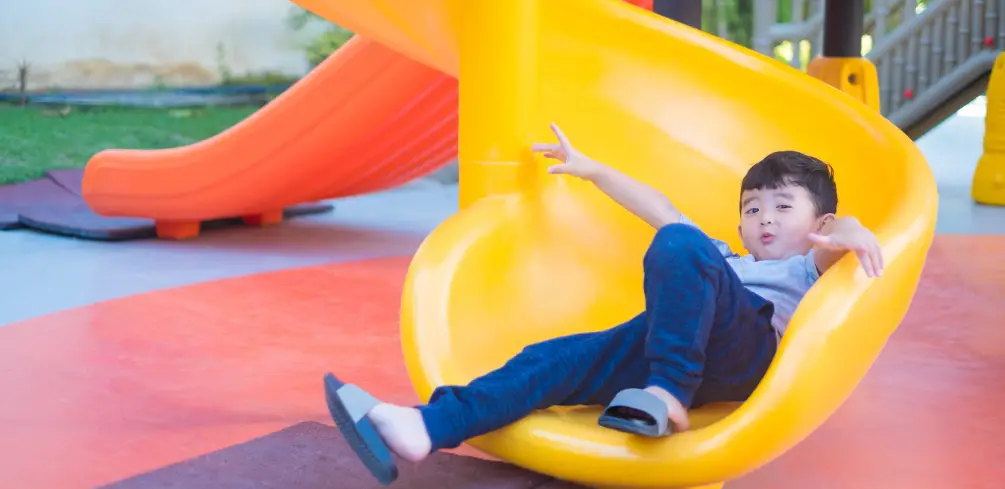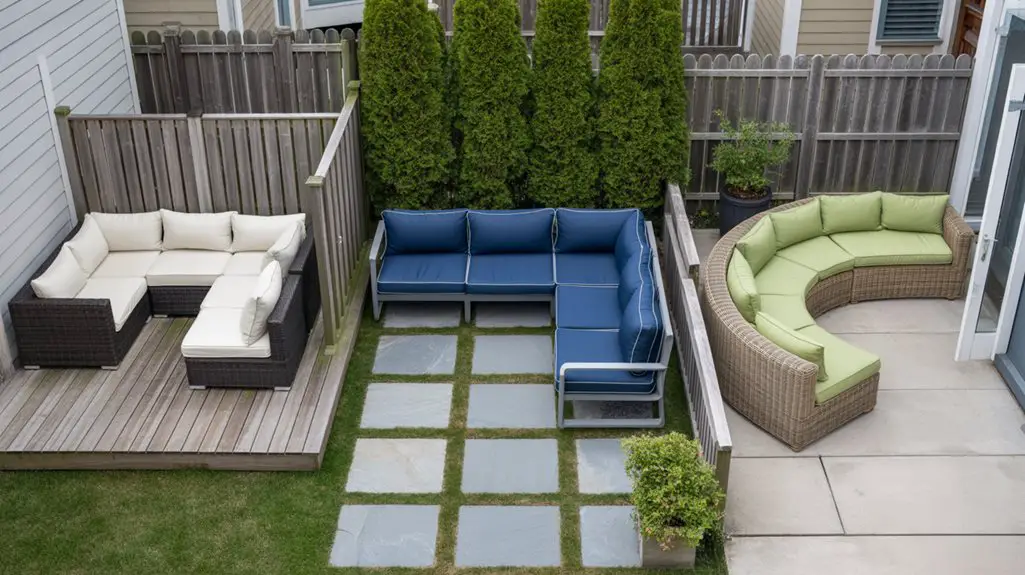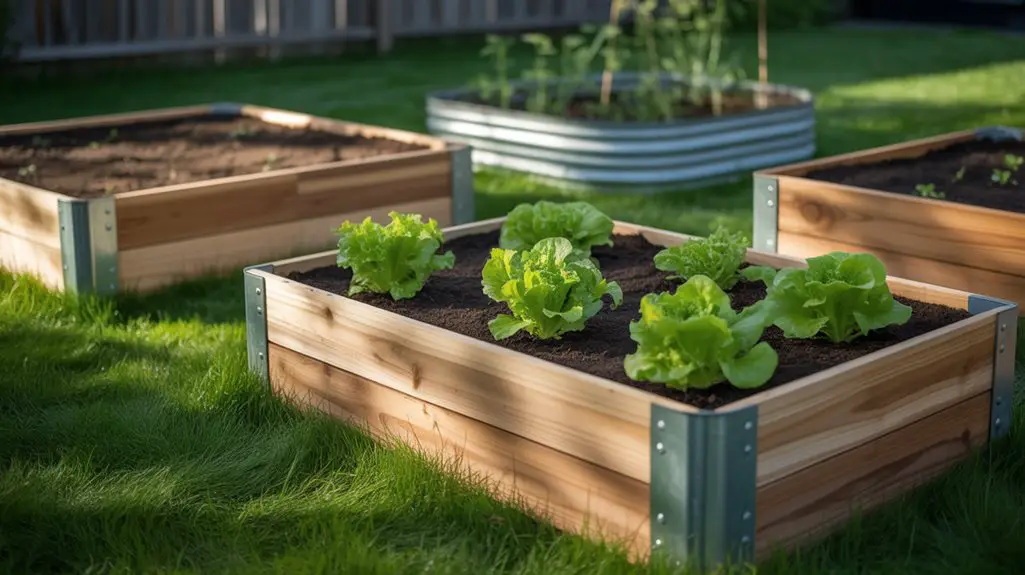As a parent, guardian, or playground supervisor, you’ve likely experienced the heart-stopping moment when a child goes down a slide too quickly.
You’re not alone in your concern for their safety and well-being on playground equipment. Slowing down a slide can reduce the risk of accidents and injuries while still providing fun for kids of all ages.
Understanding how to slow down a playground slide is crucial in creating an enjoyable yet safe environment for children to play.
By following our expert advice and practical tips in this comprehensive guide, you’ll be able to make informed decisions about modifying your existing slide or even choosing new equipment that meets higher safety standards.
Assessing the Slide’s Current Speed
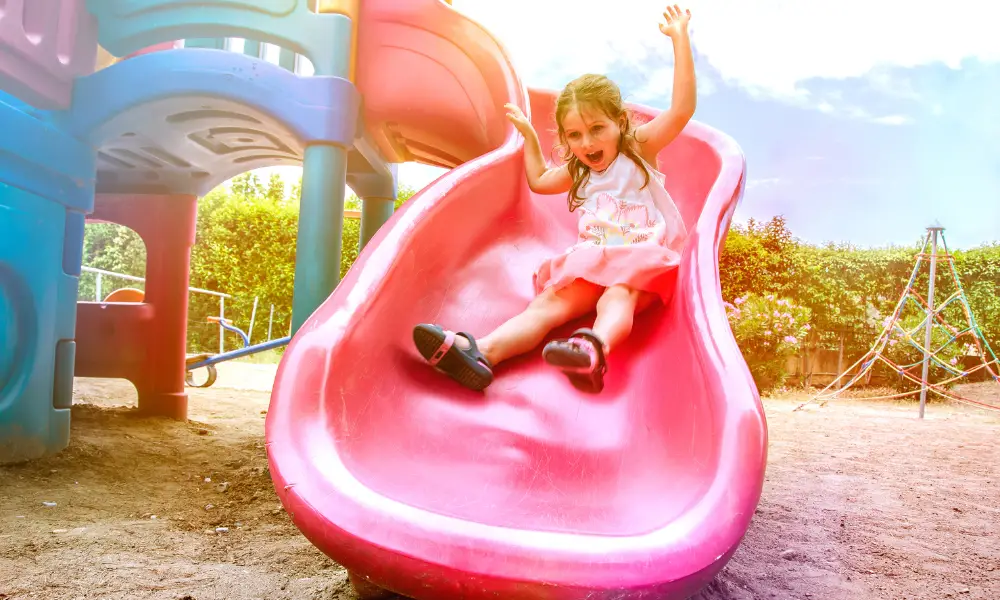
First, you’ll need to assess how fast the slide’s sending kids whizzing down its slippery slope! Slide maintenance is crucial for ensuring a safe and enjoyable playground experience.
Start by observing children as they go down the slide and take note of their speed.
Are they reaching the bottom too quickly, or are they having difficulty pushing themselves along?
It’s also essential to monitor any signs of distress or fear in their reactions. If a child seems scared or hesitant to use the slide, it might be an indication that it’s time to slow things down.
To accurately determine the speed at which children are sliding, consider setting up a simple speed monitoring system.
This can be done by measuring the distance from the top of the slide to the bottom and timing how long it takes for a child to travel that distance. By dividing the distance by time, you’ll have an understanding of their average speed.
Remember to keep safety as your top priority – choose a day with good weather conditions and ensure adult supervision during this process.
Once you’ve gathered information on both children’s reactions and actual speeds, compare your findings against recommended guidelines for playground slides’ speeds.
These recommendations may vary depending on factors such as age range and type of slide material but serve as helpful benchmarks when determining whether your slide needs adjustments.
If your data indicates that kids are indeed going too fast or experiencing discomfort while using the playground slide, it’s time to take action and implement some methods for slowing things down!
Applying Slide Surface Treatments

By applying surface treatments, you’ll effectively reduce the speed at which kids zip down the slide, ensuring a safer playtime.
Surface treatments can provide extra friction that slows down sliders and minimizes potential risks of accidents.
There are different materials and methods to consider when implementing these surface treatments.
Slide polishing
- Avoid using wax or other substances that make the slide slippery.
- Use fine-grit sandpaper to gently roughen up the slide’s surface, increasing friction without damaging it.
Friction materials
- Consider adding a non-slip mat or rubberized coating on top of the slide’s surface for added safety.
- Attach grip strips or traction tape along the sides of the slide, where children typically place their hands for support.
As you create a safer environment on your playground by applying these surface treatments, remember to monitor for any signs of wear or damage to ensure continued effectiveness.
Regularly check if any applied materials need replacements or if additional roughening is necessary with sandpaper.
By taking these precautions and adapting as needed in response to how well your chosen treatment is performing, you’ll be able to maintain an enjoyable yet secure playground experience for all children involved.
Adjusting the Slide’s Angle and Design

You don’t need a degree in physics to understand that adjusting the angle and design of your slide can make a world of difference when it comes to safety.
For starters, consider the steepness of the slide. A more gradual slope will inherently slow down the descent, providing a safer experience for children.
Furthermore, incorporating curves or bends into the design can also help reduce speed, as these features require riders to navigate twists and turns rather than simply hurtling straight down.
When examining slide materials, keep in mind that different materials provide varying levels of friction. Friction techniques play an essential role in controlling speed on slides – the higher the friction between the child’s clothing and the slide material, the slower they’ll go.
Materials such as stainless steel or polished aluminum tend to be smoother and faster, while plastic or fiberglass slides often provide greater resistance and are thus slower.
To further increase friction, consider adding texture to your slide surface – this can be achieved by using materials with built-in texture or applying grip tape designed specifically for playground equipment.
By thoughtfully selecting materials and making adjustments to your slide’s angle and design elements like curvature or bends, you can create a safer playground environment without sacrificing fun.
Remember that safety should always be prioritized over the thrill factor when designing play spaces for children – after all, you want kids to walk away from their sliding adventures with smiles on their faces rather than injuries!
So take some time to consider these factors before installing or modifying any playground slides; it could mean all the difference between happy memories and avoidable accidents.
Implementing Safety Measures
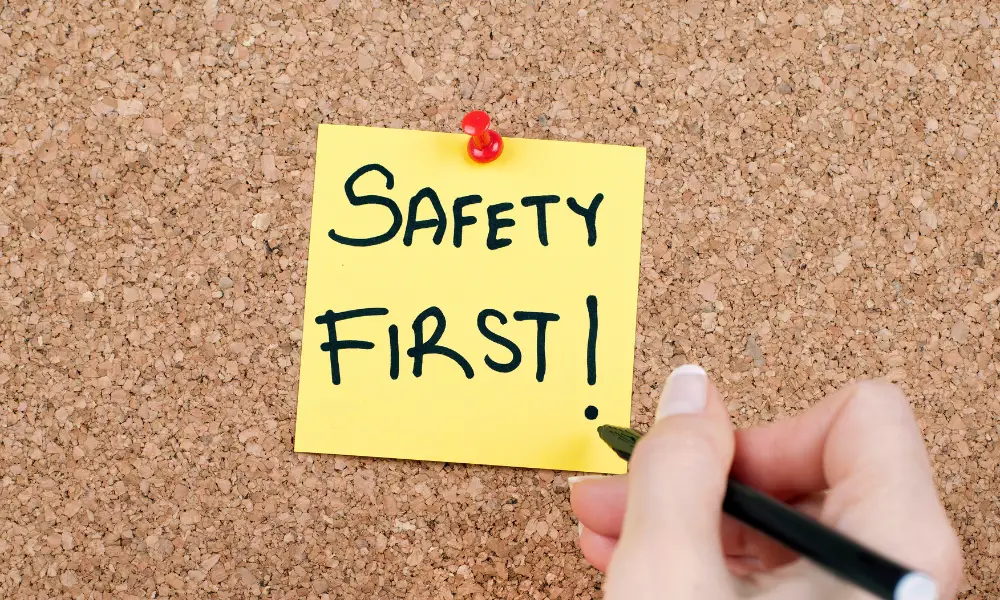
Imagine watching your child laugh and play without worry, knowing that the right safety measures have been put in place for their favorite sliding adventures.
Implementing safety measures is crucial not only to slow down a playground slide but also to avoid accidents and ensure a secure environment for children.
By integrating these precautions, you can foster an enjoyable and stress-free experience at the playground.
Slide maintenance plays a significant role in accident prevention. Regularly inspect the slide’s surface for any signs of wear, such as cracks or splinters, which may cause injuries or slow down the slide unintentionally.
Additionally, check the surrounding area for hazards like sharp objects or debris that could pose risks during playtime.
If necessary, apply lubricants like wax or silicone spray to reduce friction on the slide’s surface while maintaining its integrity.
Creating guidelines and enforcing rules are other essential aspects of ensuring safety on playground slides. Encourage children to take turns and avoid overcrowded situations where collisions might occur.
Teach them proper sliding techniques, such as sitting with their legs straight and keeping their hands on their sides or laps while going down the slide. This not only helps control speed but also prevents accidents caused by improper body positioning.
By incorporating these safety measures into your playground routine, you can confidently watch your child enjoy endless hours of fun on their favorite slide while minimizing risks and promoting responsible play habits.
Educating Slide Users on Proper Techniques

Educating children and caregivers on proper sliding techniques is essential for promoting a safe and enjoyable experience at the playground.
For instance, a local elementary school may host a ‘Playground Safety Day‘ where experts demonstrate correct body positioning and sliding etiquette, empowering both kids and adults to engage in responsible play while minimizing potential accidents.
User communication plays a vital role in ensuring that everyone uses the slide safely and respects others’ turns.
To help children understand slide etiquette, consider teaching them these key points:
By reinforcing these practices, you encourage responsible behavior among young users and establish an environment conducive to safe play. Additionally, it’s crucial for adults to model good behavior by demonstrating patience, attentiveness, and clear communication when using playground equipment.
Educating all playground users about proper sliding techniques significantly reduces risk factors associated with accidents on slides.
Encourage schools, community centers, or even neighborhood parks to organize events like ‘Playground Safety Day,’ allowing everyone within your community to learn best practices together.
This collective effort promotes awareness of safety measures while fostering an atmosphere of cooperation and fun in shared recreational spaces.
Conclusion
In conclusion, don’t let the fear of a fast slide turn your playground experience into a slippery slope. With some simple adjustments and safety measures, you can keep those little daredevils safe as they swoop down the slide.
Remember, knowledge is power – so educate yourself and others on proper techniques to ensure that everyone enjoys their time at the playground without any unexpected bumps or bruises.

